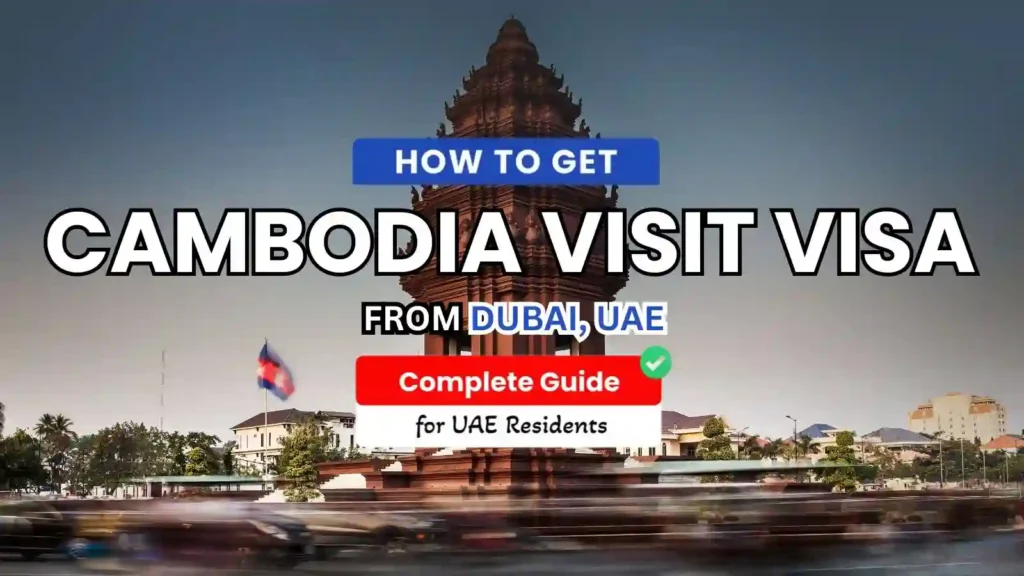
Cambodia has a way of grabbing your attention and not letting go. One moment you’re standing under sunrise skies at Angkor, the next you’re cruising in a tuk-tuk past sizzling street grills and temple walls older than your imagination. If you’re based in the UAE, it’s a fairly easy hop—so long as your visa plan is as tidy as your packing cubes. A little prep now means fewer airport surprises and more time for the fun stuff.
Do you even need a visa?
Here’s the simple version. If you’re an Emirati passport holder, you can usually enter with an eVisa arranged in advance or grab a visa on arrival. If you’re an expatriate resident in the UAE, you’ll also need a visa—most nationalities can either apply online for an eVisa or get one on arrival at major entry points. The golden rule is to check by your nationality, not by your UAE residency. Two quiet minutes on official guidance will save you a noisy queue later.
Pick your lane: eVisa, visa on arrival, or embassy
Think of the process like choosing a check-in line: pick the one that fits you and stick with it.
eVisa (the head-start option)
If your passport qualifies, you apply online, upload a photo and passport page, pay the fee, and receive approval by email—often within three business days. You print it, tuck it next to your boarding pass, and breeze through when you land. It’s ideal if you love a smooth arrival after a long flight.
Visa on arrival (the flexible option)
Eligible travelers can sort the visa at Phnom Penh, Siem Reap, or Sihanoukville airports (and certain land borders). You complete a short form, show your documents, hand over the fee (USD notes are your friend), and you’re in. It’s straightforward, but keep a spare passport photo and small bills ready so you’re not hunting for change when all you want is a shower and a snack.
Embassy application (the plan-ahead option)
If your nationality isn’t covered by eVisa or visa on arrival, apply through the Cambodian Embassy or Consulate in the UAE. You’ll submit your form and documents, pay the fee, and allow a little extra time. This route rewards early birds and flexible hotel bookings.
What to prepare (without overthinking it)
Aim for a “one-grab folder” you can show in seconds. You’ll want a passport valid at least six months beyond your entry date, a UAE residence visa that’s still valid after your return, and a recent passport photo. Add your completed form (online or on arrival), return flight proof, and your accommodation details—hotel confirmation or a host’s address and number. Travel insurance isn’t just a polite suggestion; it’s your parachute if plans wobble. Save clean scans with clear filenames. When names, dates, and bookings match, everything moves faster.
Fees, timing, and the little money details
eVisas typically land in your inbox within three business days; visas on arrival are often done in 15–30 minutes depending on lines. Embassy processing can take a few working days more, especially around holidays. Fees vary by nationality and visa type, so check your exact amount before you head out. If you’re paying at the airport, crisp USD bills keep the counter conversation short and sweet.
What happens at the airport
On arrival, keep your passport, eVisa printout (or on-arrival form), hotel details, and return flight handy. Expect simple questions—how long, where you’re staying, what brings you to Cambodia—and give simple answers. Short, clear, confident. Once you’re stamped in, the only decision left is whether to hunt down iced coffee first or ride straight to your hotel.
Smart traveler moves that save time
A few habits make everything smoother. Apply for the eVisa about a week in advance if you want a no-fuss arrival. Keep both digital and printed copies of key documents because batteries die when you need them most. Save your hotel address in your notes and pin it on an offline map. Bring a backup card from a different network and turn on transaction alerts. If your bank statements show a sudden large deposit, add a one-line explanation—bonus, refund, sale—so it doesn’t look mysterious. Professional is calm; calm gets stamped faster.
Common hiccups—and easy fixes
Most snags are tiny and avoidable. Fuzzy scans, mismatched spellings, photos with the wrong background, or bookings that quietly expired can slow you down. Double-check the basics the night before you submit anything. If you’re using visa on arrival, don’t bury your passport photo at the bottom of your bag; keep it with your cash and application page. And unless you love drama, skip non-refundable bookings until your visa or eVisa is confirmed.
A quick note on travel style
Cambodia rewards you for being prepared and curious. That means breathable clothing for temple days, a light scarf for respectful coverage, comfortable shoes that survive cobblestones and temple stairs, and a small power bank for map-heavy afternoons. Sun protection is a must—the kind you actually reapply. And if you’re planning sunrise at Angkor, set two alarms. You’ll thank yourself when those towers appear out of the early blue.
Step-by-step recap (so it sticks)
First, confirm your path by nationality: eVisa, visa on arrival, or embassy. Second, gather the essentials—passport, UAE residency, photo, bookings, and insurance—then make sure all dates match. Third, apply using the method that fits you and keep copies of everything. Fourth, travel with documents within easy reach and answer questions simply on arrival. That’s it. No secret handshakes. Just clean details and steady timing.
Final word before you pack
When you handle the visa like a checklist—not a mystery—Cambodia opens up beautifully. You move past immigration with a calm smile and step into a country that feels both ancient and alive. Do the tidy work now: choose your lane, line up your documents, give yourself a small time buffer.
